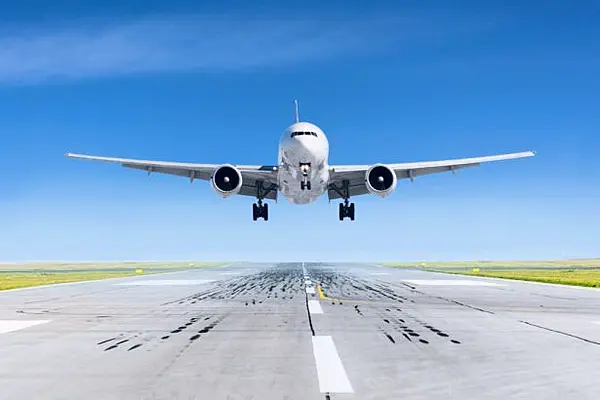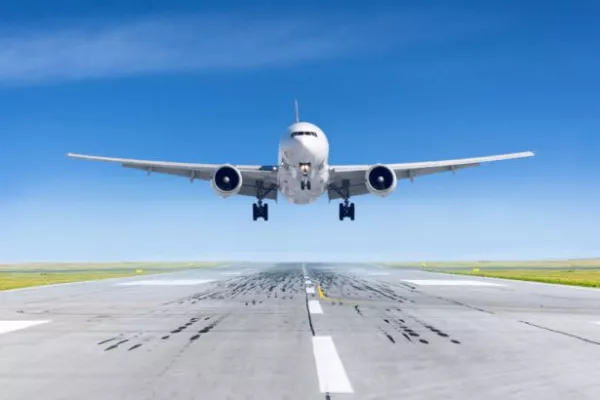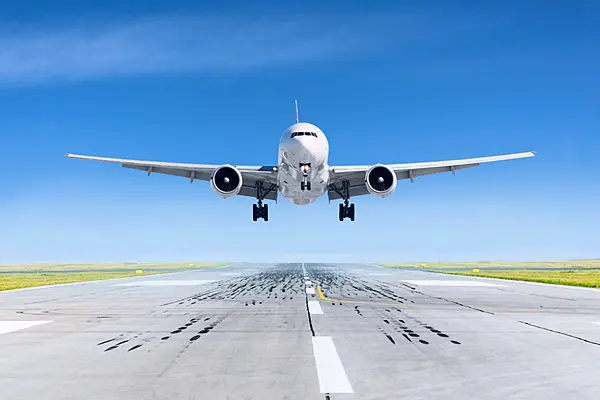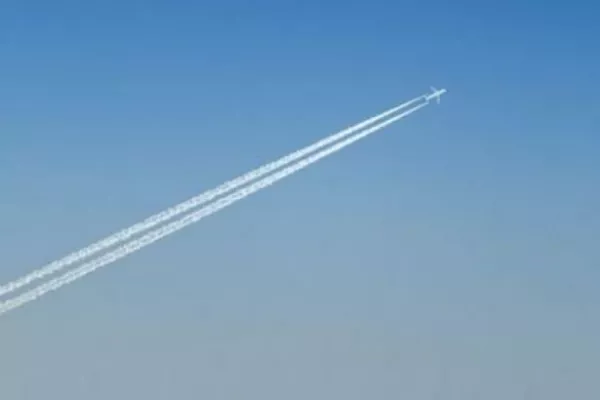Disruption to US-bound air travel caused by the rollout of 5G services in the United States eased on Wednesday January 19 as authorities approved more flights, but a top airline warned "irresponsible" regulatory confusion would be felt internationally for days.
Airlines and telecom companies have been at loggerheads over the deployment of 5G mobile services over concerns that the powerful signals could interfere with airplane systems.
Carriers across Asia, the Middle East and Europe cancelled flights to the United States or switched planes at the last minute on Tuesday January 18 and Wednesday January 19, disrupting travel for thousands of passengers, over safety concerns caused by the 5G deployment.
But Japanese carriers said late on Wednesday January 19 that they would restore cancelled flights and US airlines said that thousands of planes were operating normally after two telecom carriers agreed to delay the rollout at key airports.
The decision late on Tuesday January 18 by AT&T and Verizon Communications to delay switching on new telecom masts near key airports, just hours ahead of a wider US rollout, came too late to avoid a ripple of cancellations.
Much of the initial disruption hit the Boeing 777, for decades a workhorse of long-distance air travel.
Dubai's Emirates, the world's largest international passenger carrier and the largest 777 operator, hit out at "mixed messages" as it suspended nine US destinations.
The airline's longstanding president Tim Clark told CNN that it had not been aware of the extent of the safety concerns until Tuesday January 18 and let rip at what he called it "one of the most delinquent, utterly irresponsible" episodes in his career.
Some 32,000 Emirates passengers over the next three days "will be completely inconvenienced as a result of flight cancellations," Clark said, adding the message about safety risks had "got through at a very, very late stage".
United Airlines, by contrast, said that it was forecasting only "minor disruptions" due to remaining 5G restrictions.
International carriers are particularly exposed because of the lead time needed to prepare flights and pre-position crews ready to fly intercontinental jets home, experts said.
"The last-minute postponement happened too late to stop the crews being sent out for today's (return) flight. It just made it a nightmare," said a pilot with a major European airline.
Shares in European long-haul carriers fell by 3%-4%, underperforming slightly weaker shares in US airlines.
Interference
US airlines and the Federal Aviation Administration have warned that the 5G frequencies and transmission strength being deployed in the United States could interfere with radio altimeter readings needed for bad-weather landings on some jets.
Radio altimeters must give clear data on the height above the ground on approach to help with automated landings and also verify that a jet has landed before allowing reverse thrust.
US President Joe Biden said that he had "pushed as hard I can to have the 5G folks hold up and abide by what was being requested by the airlines until they could more modernize over the years -- so 5G would not interfere with the potential of a landing".
Boeing said that it was working with all parties on a "data-driven solution for the long-term".
Its 777 was last year the second-most used widebody plane on flights to and from U.S. airports with around 210,000 flights, behind the older 767, according to data from FlightRadar24.
European regulators say that no risks have been found elsewhere.
The Federal Aviation Administration is frantically reviewing guidance on which airports and planes are affected.
On Wednesday January 19, it said that it had issued new approvals allowing some 62% of US commercial airplanes to perform low-visibility landings at airports where 5G is deployed, up from 45% cleared previously.
Analysts said that a slump in long-haul flying caused by pandemic border restrictions would limit the immediate airline impact.
"It's the off season, so in January or February airlines will be losing money and that's not counting the impact of the pandemic. At the moment they are fighting for survival," James Halstead, managing partner at UK-based Aviation Strategy, said.
"Where it might hurt is that some airlines are using the same long-haul aircraft to carry freight," he added.
Airlines reporting cancellations or model switches earlier included Germany's Lufthansa, Korean Air Lines, Singapore Airlines and British Airways - all long-haul carriers with major freight operations.
EXPLAINER-Do 5G Telecoms Pose A Threat To Airline Safety?
Major international airlines rushed to rejig or cancel flights to the United States ahead of a 5G wireless rollout on Wednesday January 19 that has triggered safety concerns, despite wireless carriers saying they will delay parts of the deployment.
The Federal Aviation Administration (FAA) had warned that potential 5G interference could affect altitude readings on some jets, with airlines citing the Boeing 777 among the models in the spotlight.
Despite an announcement by AT&T and Verizon that they would pause the 5G rollout near airports, several airlines still cancelled flights or switched aircraft models.
Here is the background to the dispute:
What Happened?
The United States auctioned mid-range 5G bandwidth to mobile phone companies in early 2021 in the 3.7-3.98 GHz range on the spectrum known as C band, for about $80 billion.
Why Is That A Problem?
The FAA warned that the new 5G technology could interfere with instruments such as altimeters, which measure how far above the ground an airplane is travelling.
Altimeters operate in the 4.2-4.4 GHz range and the concern is that the auctioned frequencies sit too close to this range.
United Airlines CEO Scott Kirby said last month the FAA's 5G directives would bar the use of radio altimeters at about 40 of the biggest U.S. airports.
US airlines have warned the directives could disrupt up to 4% of daily flights.
Kirby said if left unresolved it could mean that at major U.S. airports in the event of bad weather, cloud cover or even heavy smog "you could only do visual approaches essentially."
What Aircraft Are Affected?
Airlines announced plans to switch away from Boeing 777 and Boeing 747-8 aircraft, including Emirates, All Nippon Airways (ANA), Japan Airlines and Lufthansa.
How Can This Be Fixed?
In the short-term, AT&T and Verizon agreed to temporarily defer turning on some wireless towers near key airports to avert a significant disruption to U.S. flights.
Longer-term, the FAA needs to clear and allow the vast majority of the US commercial airplane fleet to perform low-visibility landings at many airports where 5G C-band will be deployed. This means certifying altimeters to operate near 5G base stations.
What Difference Does The Frequency Make?
The higher the frequency in the spectrum, the faster the service. So in order to get full value from 5G, operators want to operate at higher frequencies.
Some of the C band spectrum auctioned had been used for satellite radio but the transition to 5G means there will be much more traffic.
What Do The Telecoms Companies Say?
Verizon and AT&T have argued that C band 5G has been deployed in approximately 40 other countries without aviation interference issues.
They have agreed to buffer zones around 50 airports in the United States, similar to those used in France, for six months to reduce interference risks.
Why Is This Not An Issue Elsewhere?
The European Union in 2019 set standards for mid-range 5G frequencies in a 3.4-3.8 GHz range, a lower frequency than the service set to be rolled out in the United States. The bandwidth has been auctioned in Europe and is in use in many of the bloc's 27 member states so far without issue.
The European Union Aviation Safety Agency (EASA), which oversees 31 states, said on December 17 the issue was specific to U.S. airspace. "At this stage, no risk of unsafe interference has been identified in Europe," it said.
FAA officials have noted the spectrum used by France (3.6-3.8 GHz) sits further away from the spectrum (4.2-4.4 GHz) used for altimeters in the United States and France's power level for 5G is much lower than what is authorized in the United States.
Verizon has said it will not use spectrum that is closer to the higher band for several years.
In South Korea, the 5G mobile communication frequency is 3.42-3.7 GHz band and there has been no report of interference with radio wave since commercialization of 5G in April 2019.
Currently, 5G mobile communication wireless stations are in operation near airports, but there have been no reports of problems.
"Wireless carriers in nearly 40 countries throughout Europe and Asia now use the C band for 5G, with no reported effects on radio altimeters that operate in the same internationally designated 4.2-4.4 GHz band," CTIA, a US wireless trade group, said in a filing with the Federal Communications Commission.
News by Reuters, edited by Hospitality Ireland. Click subscribe to sign up for the Hospitality Ireland print edition.








